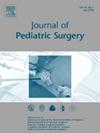青少年乳糜泻的性别差异
IF 2.4
2区 医学
Q1 PEDIATRICS
引用次数: 0
摘要
背景:毛样疾病是青少年中一种常见的破坏性疾病。我们按性别研究了毛鞘疾病对青少年的影响。研究设计前瞻性收集人口统计学、精神健康合并症、疾病严重程度、多毛症、疾病相关生活质量影响、干预措施和结果的数据,从Pilonidal Care Clinic REDCap数据库中检索,并按性别进行分析。结果1356例毛毛菌病患者中,女性562例(41%),男性794例。女性平均发病年龄为14.8岁,男性为16.9岁(p值<;0.001)。与男性相比,女性的精神健康合并症发生率相似(17% vs 16%;p值= 0.268),但女性确诊焦虑症的发生率更高(15% vs 10%;p值= 0.005)。女性比男性更不可能多毛(32%比79%;p值<;0.001),并且更有可能在臀部皱褶处有细毛(51%比5%;假定值& lt; 0.001)。女性的疾病严重程度低于男性(轻度:68%对47%,中度:22%对33%,重度:3%对10%;p值<;0.001),并且不太可能接受过先前的手术(3% vs 8%;假定值& lt; 0.001)。然而,在研究的6个领域中,女性与疾病相关的生活质量影响在5个领域比男性更严重,包括:疼痛(5比3;p值<;0.001),尴尬(4 vs 3;p值= 0.021),运动能力(2比1;p值= 0.01),常规中断(4 vs 3;p值= 0.024)和对学校、工作或活动的干扰(3 vs 2;p值= 0.004)。更多的女性在第一次就诊时进行了挖穴(33% vs 27%;p值= 0.011),切口引流(6% vs 3%;p值= 0.01),激光滤泡消融率相似(53% vs 55%;p值= 0.45)。结论女性毛鞘疾病的患病率明显高于文献报道。毛突疾病对女性的影响不同于男性,包括:发病更早,焦虑发生率更高,以及对生活质量的疾病相关影响更大,尽管疾病表现时的严重程度较低。临床治疗的耐受性在性别之间具有可比性。研究类型:回顾性、队列研究。证据水平ⅱ。本文章由计算机程序翻译,如有差异,请以英文原文为准。
Gender Differences in Adolescent Pilonidal Disease
Background
Pilonidal disease is a common, disruptive condition in adolescents. We studied the effects of pilonidal disease on adolescents by gender.
Study design
Prospectively collected data on demographics, mental health comorbidities, disease severity, hirsutism, disease-related quality of life impact, interventions, and outcomes were retrieved from a Pilonidal Care Clinic REDCap database and were analyzed by gender.
Results
Of 1356 patients with pilonidal disease, 562 (41 %) were female and 794 male. Average age at disease onset was 14.8 years for females and 16.9 years for males (p-value <0.001). The incidence of mental health comorbidities was similar in females compared to males (17 % vs 16 %; p-value = 0.268) but females had a higher incidence of diagnosed anxiety (15 % vs 10 %; p-value = 0.005). Females were less likely to be hirsute than males (32 % vs 79 %; p-value <0.001), and were more likely to have fine hair in their gluteal crease (51 % vs 5 %; p-value <0.001). Females presented with lower disease severity than males (mild: 68 % vs 47 %, moderate: 22 % vs 33 %, and severe: 3 % vs 10 %; p-value <0.001), and were less likely to have undergone prior operation (3 % vs 8 %; p-value <0.001). However, disease-related quality of life impact was more severe for females than males in 5 of 6 domains examined including: pain (5 vs 3; p-value <0.001), embarrassment (4 vs 3; p-value = 0.021), ability to play sports (2 vs 1; p-value = 0.01), disruption of routine (4 vs 3; p-value = 0.024) and disturbance to school, work, or activities (3 vs 2; p-value = 0.004). More females underwent pit picking on their first clinic visit (33 % vs 27 %; p-value = 0.011) and incision and drainage (6 % vs 3 %; p-value = 0.01), with similar rates of laser follicle ablation (53 % vs 55 %; p-value = 0.45).
Conclusion
The prevalence of pilonidal disease is much higher in females than previously reported. Pilonidal disease has different impacts on females than males including: earlier onset, higher incidence of anxiety, and greater disease-related impact on quality of life, despite lower disease severity on presentation. Tolerance of clinic treatments is comparable between genders.
Type of study
Retrospective, cohort study.
Level of Evidence
III.
求助全文
通过发布文献求助,成功后即可免费获取论文全文。
去求助
来源期刊
CiteScore
1.10
自引率
12.50%
发文量
569
审稿时长
38 days
期刊介绍:
The journal presents original contributions as well as a complete international abstracts section and other special departments to provide the most current source of information and references in pediatric surgery. The journal is based on the need to improve the surgical care of infants and children, not only through advances in physiology, pathology and surgical techniques, but also by attention to the unique emotional and physical needs of the young patient.

 求助内容:
求助内容: 应助结果提醒方式:
应助结果提醒方式:


